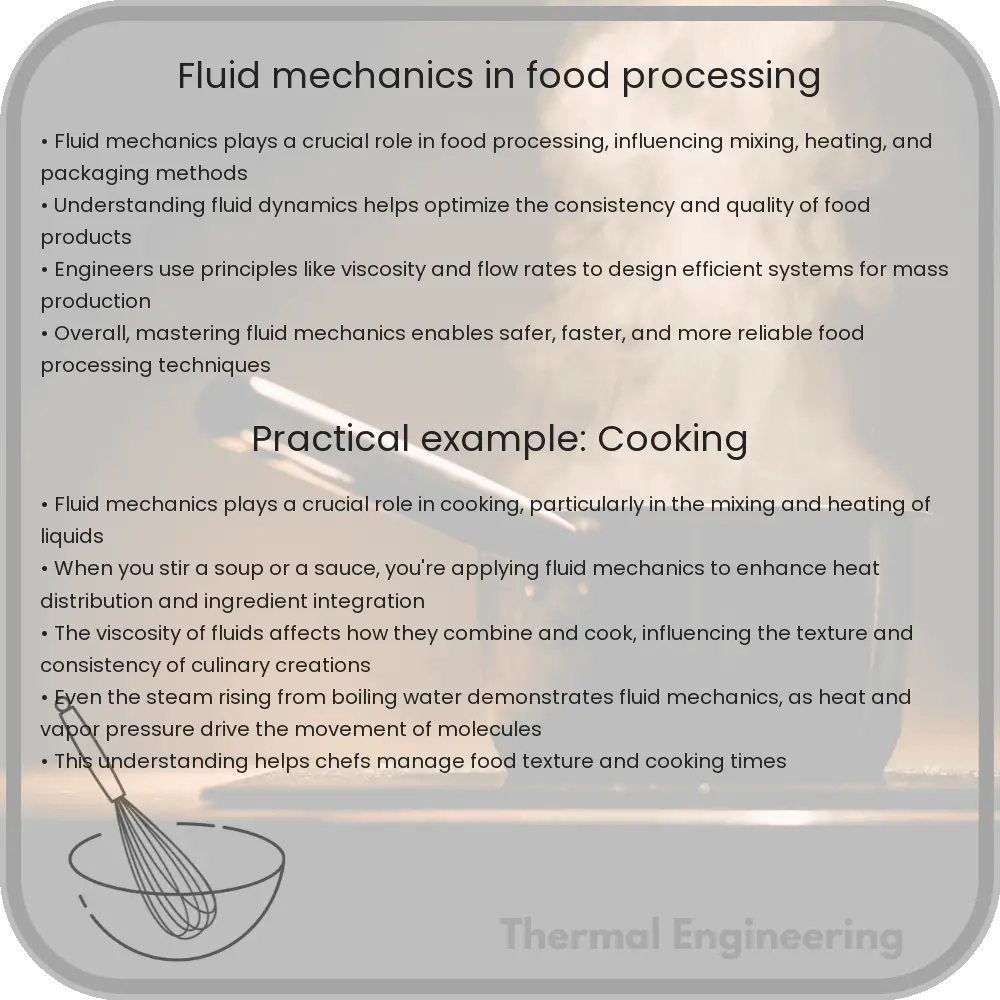Learn how fluid mechanics is essential in food processing for optimizing safety, efficiency, and quality through heating, mixing, and more.

Introduction to Fluid Mechanics in Food Processing
Fluid mechanics is a branch of engineering that studies the behavior of fluids (liquids and gases) and the forces on them. Fluid mechanics is crucial in many aspects of food processing, which involves the mass production, processing, and preservation of food. Understanding the principles of fluid mechanics enables engineers to design systems that improve the safety, efficiency, and quality of food products.
Key Applications of Fluid Mechanics in Food Processing
- Heat Transfer: Many food processing operations involve heating or cooling to ensure food safety and prolong shelf life. Fluid mechanics plays a vital role in optimizing heat transfer processes such as pasteurization, where liquid foods are heated to destroy harmful microorganisms. The rate of heat transfer is crucial and can be modeled by understanding the fluid properties and flow characteristics.
- Mixing and Agitation: Effective mixing of fluids is essential in food processing to achieve consistent flavor, color, and texture. Fluid mechanics aids in designing equipment like mixers and agitators, ensuring homogeneous mixing of ingredients with different viscosities.
- Cleaning and Sanitization: Cleaning in place (CIP) systems use jets and sprays of cleaning solutions to clean the interior surfaces of pipes and tanks used in food processing. The design of these systems is based on principles of fluid dynamics to ensure effective cleaning and minimize water and chemical usage.
- Product Filtration: Filtration processes are used to clarify beverages and remove particulate matter. The flow of fluid through a filter media involves various fluid mechanics principles, including pressure drops and flow rates.
Mathematical Description of Fluid Flow
The fundamental equations of fluid mechanics include the continuity equation, which ensures mass conservation, and the Navier-Stokes equations, which describe the momentum conservation in fluid flow. These equations can be stated as:
- Continuity Equation: \( \nabla \cdot \vec{v} = 0 \), where \( \vec{v} \) represents the velocity field of the fluid.
- Navier-Stokes Equations: \( \rho \left(\frac{\partial \vec{v}}{\partial t} + \vec{v} \cdot \nabla \vec{v}\right) = -\nabla p + \mu \nabla^2 \vec{v} + \vec{f} \), where \( \rho \) is the fluid density, \( p \) is the fluid pressure, \( \mu \) is the viscosity, and \( \vec{f} \) represents the body forces per unit volume.
These equations, along with empirical data specific to individual food components, allow engineers to design equipment and processes that optimize fluid flow characteristics for enhanced food safety and quality.
Conclusion
Fluid mechanics plays a vital role in food processing engineering by helping to design systems that improve production efficiency, product quality, and safety. By applying the principles of fluid dynamics, engineers can solve practical problems related to heating, mixing, cleaning, and filtration in the food industry, making the processes more efficient and environmentally friendly. As the food industry continues to evolve, the role of fluid mechanics will grow even more critical, emphasizing the need for ongoing research and development in this area.